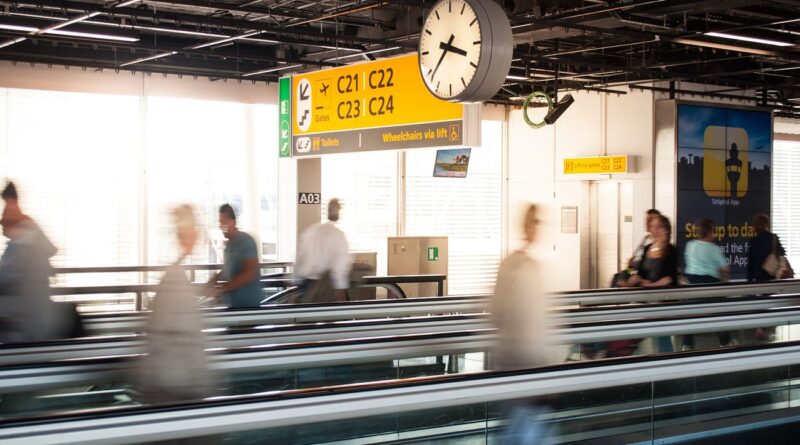Controversial Flight Caps at Schiphol Spark Debate: Is There a Better Way?
The largest airport in The Netherlands is about to get a lot smaller, as the Dutch government pushes forward with plans to cap the number of flights in a bid to reduce noise pollution and carbon emissions. The decision, set to take effect in 2024 pending approval from the European Commission, has stirred up quite a storm, with flag carrier KLM and airline industry groups vehemently opposing it. The government’s reasoning behind the cap encompasses concerns about noise pollution, greenhouse gas emissions, and logistical issues at the airport. But is there a more effective way to address these concerns without stifling air travel and potentially impacting passengers and the European economy? Let’s dive into the debate.
The Flight Cap: A Harsh Reality for Airlines and Passengers
Under the proposed cap, Schiphol Airport will see flights limited to 452,500 per year, a 9.5% reduction from 2019 levels and slightly lower than an earlier proposal of 460,000. Airlines, including Air France-KLM, have contested this move, arguing that it will harm their business and contravene previous agreements. KLM went as far as calling the cap “incomprehensible” and a threat to the Netherlands. Considering Schiphol is one of Europe’s most important economic engines, I’d be inclined to agree here.
The government’s primary motivation for imposing the cap revolves around mitigating noise pollution, reducing greenhouse gas emissions, and resolving logistical challenges at the airport. These reasons have garnered support from environmental groups and even Schiphol itself. However, the airlines’ appeals to the Dutch Supreme Court, after a July appeal loss, highlight the contentious nature of the issue.
Passenger Impact: Higher Fares and Fewer Nonstop Options
The implications for passengers are profound. Schiphol serves as a critical global hub, connecting not only the Netherlands but all of Europe to the rest of the world. Many passengers transit through AMS on their way to various European destinations. Moreover, KLM, headquartered at AMS, plays a vital role in providing connectivity to smaller European airports, such as Aberdeen, Scotland (ABZ), where nonstop options to the mainland are limited. The flight cap raises questions about the viability of these services, which could translate into higher fares and fewer nonstop options for passengers.
While 9.5% sounds like a small number, consider that in 2022, Schiphol welcomed 52.5 million passengers. A 9.5% reduction would displace approximately 5 million passengers over the course of a year. Taking 5 million seats out of circulation would undoubtedly cause fares not just to/from AMS, but to Europe as a whole to rise considerably.
A Different Approach
As we consider the implications of this flight cap, it’s worth exploring alternative approaches that might achieve the same environmental goals while preserving the viability of Schiphol as a global hub. Here are some thoughts:
- Promote Sustainable Aviation Fuel (SAF) and Fuel-Efficient Aircraft: Rather than restricting the number of flights, incentivize airlines to use SAF and deploy more fuel-efficient aircraft like the Boeing 787 Dreamliner or 737 MAX series. This approach tackles emissions directly without limiting air travel. Additionally, these aircraft are much quieter than their predecessors (tackling the noise issue) and feature lower operating costs and a better passenger experience. It’s a win-win for everyone involved.
- Implement a Carbon Offset Tax: Instead of flight caps, the Dutch government could implement something similar to the UK’s Air Passenger Duty (APD) and use the funds collected towards carbon offset activities. This would also allow the Dutch government, similar to the UK, to implement this selectively based on various criteria (for example, taxing O&D passengers without impacting the massive transit operation at Schiphol).
- Restrict Private Jets: If environmental concerns are paramount, consider that private jets emit considerably more CO2 per seat mile flown than a commercial flight. Some major airports already have restrictions on private aviation for operational reasons, and given the logistical issues already present as Schiphol, this would be a great “two birds with one stone” strategy.
- Consider the Big Picture: Recognize that climate initiatives can’t exist in isolation. Understand that limiting flights at Schiphol may simply redirect air traffic to other regional hubs, leading to more emissions due to additional stops in itineraries. Travel demand is higher than it’s ever been, and I can’t see this new rule slowing it down in any meaningful way; rather, passengers will connect through alternative hubs like CDG or Heathrow. It’s a lose-lose-lose scenario; passengers lose convenience & choice, airlines lose revenue, and the environment loses with more emissions.
Bottom Line
The decision to cap flights at Schiphol Airport has sparked intense debate, pitting environmental concerns against the economic and practical realities of air travel. While these concerns have validity, it’s essential to explore alternative approaches that balance environmental goals with the needs of passengers and businesses, instead of jumping to conclusions and implementing blanket, one-size-fits-all “solutions.”

